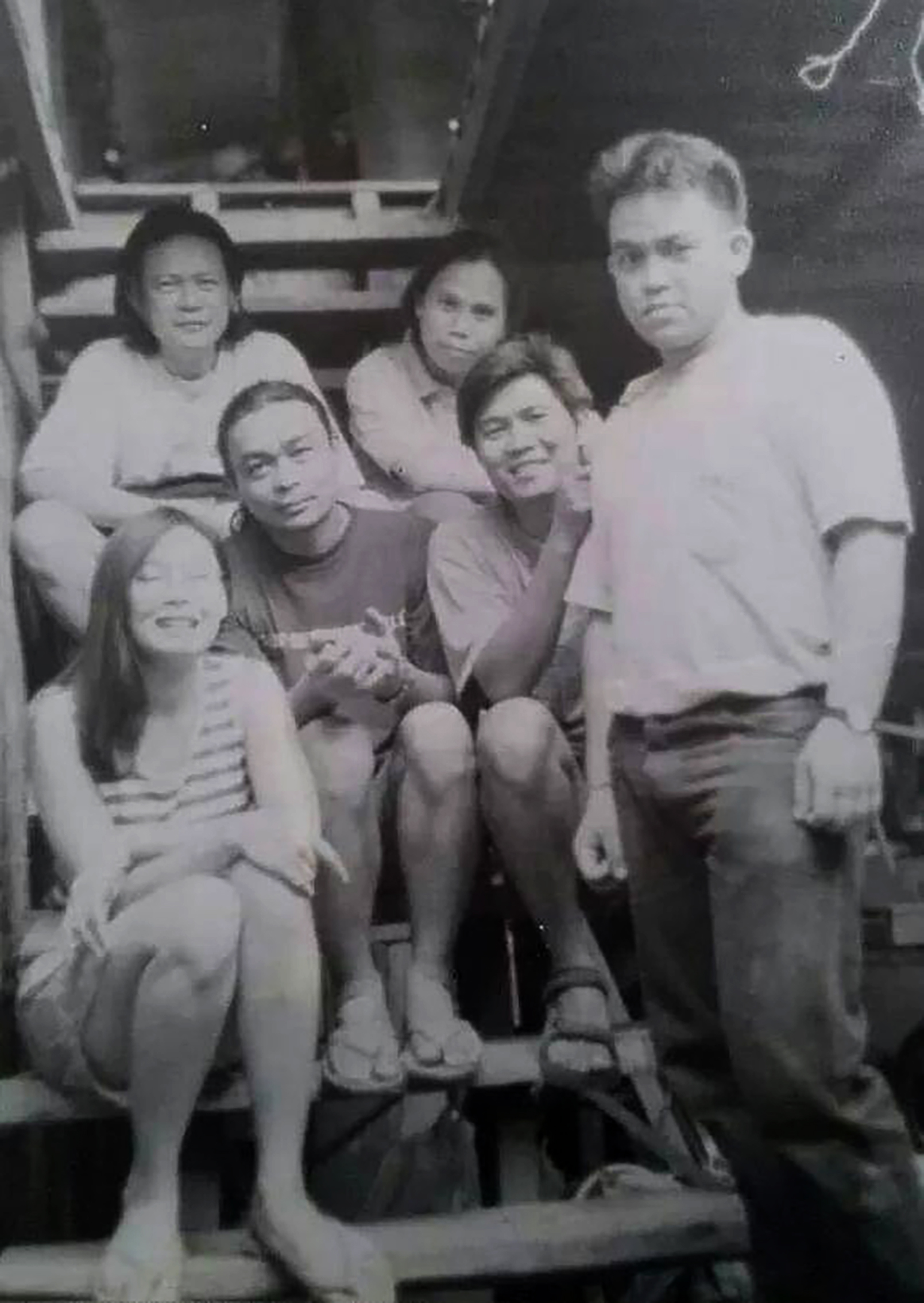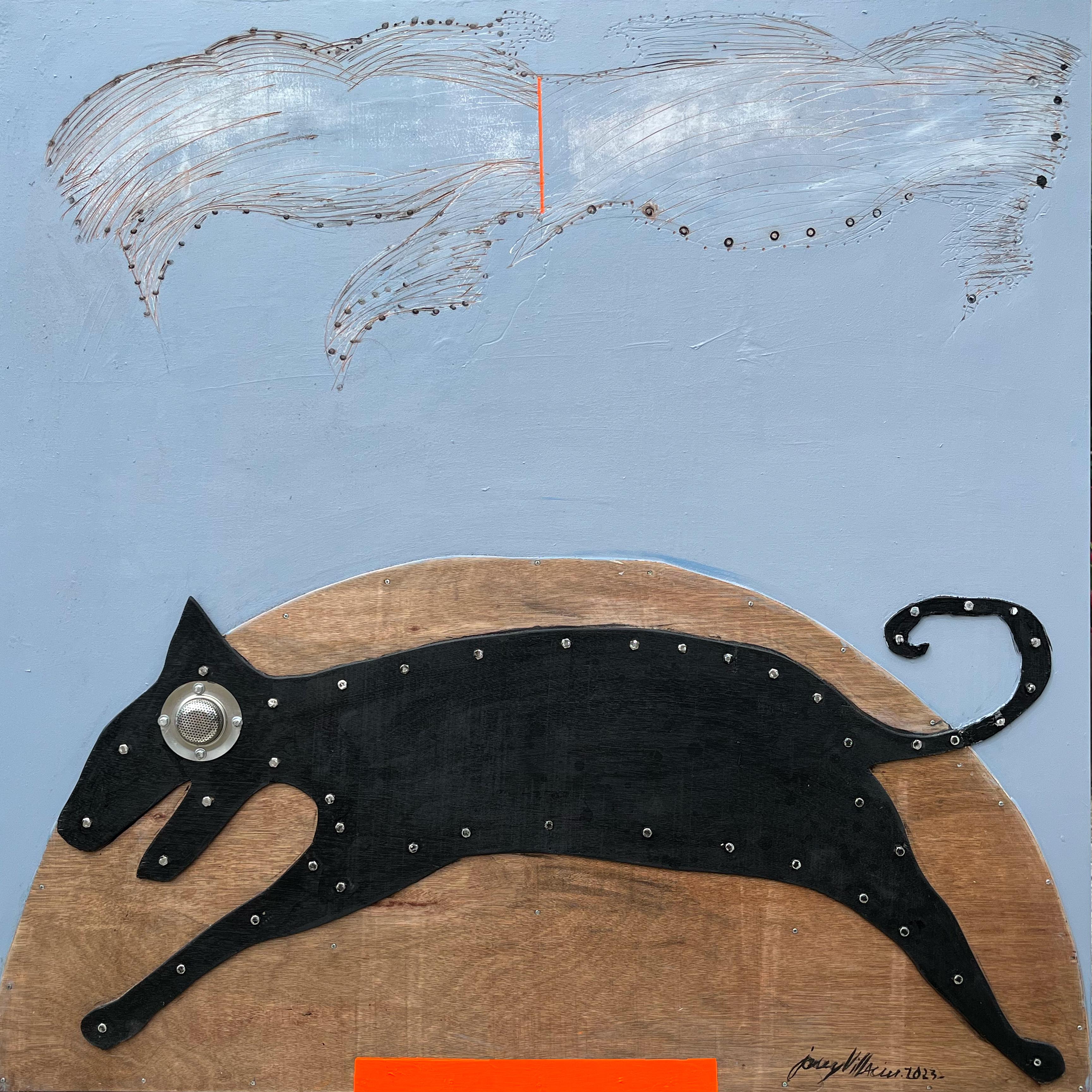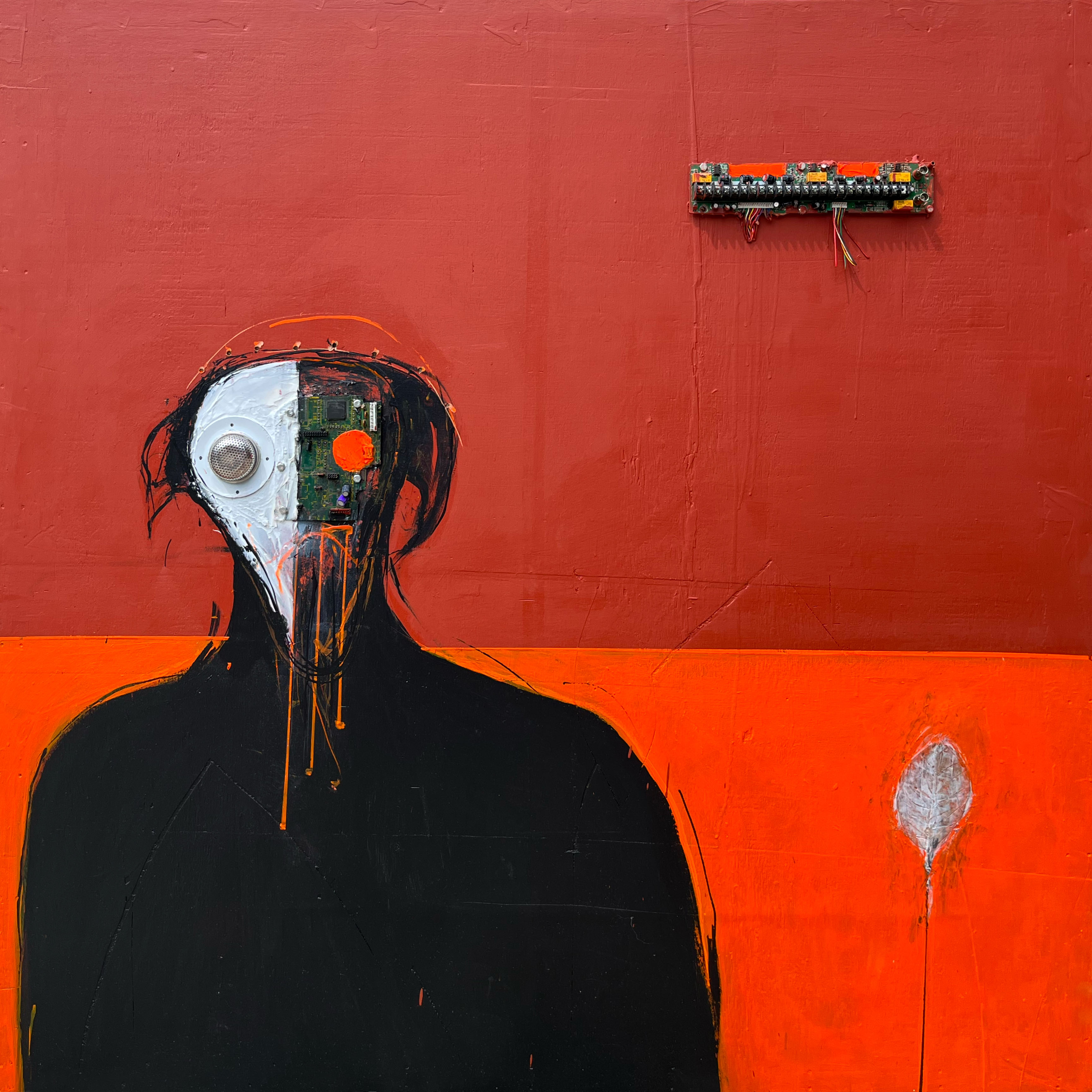Starkly colored paintings and child-like drawings are at the center of Javy Villacin’s Itum na Ido at Qube Gallery’s Crossroads location in Cebu. The exhibition marks the artist’s return after a decade-long hiatus and imagines the futuristic evolution of power while using layered references and symbols from Visayas folklore and mythology.
Ten years after his last solo show, Villacin presents a new series of paintings and assemblages featuring images of black dogs. Several depictions of his loyal Labrador, Yuri, can be found among these works. They are intertwined with the artist’s interpretation of similar creatures drawn from the Sugidanon (epics) of Panay Island in the likeness of Irong-buang (mad dog) and the mythical Tikum Kadlum (black dog). They are said to possess enchanting powers and intervene in human activities and conflicts.
Prompted by the pervasive presence of stray dogs and their remarkable ability to assert dominance in public spaces, “Itum na Ido” merges the personal and the mythical while redirecting our attention to socio-political realities, unmasking the hidden mechanisms of power and those that govern social order. In the piece, Itum nga Ido nga Gauswang Sa Usgad (Black Dog Howling at Full Moon), a dog is seen howling in the middle of the night as if giving a warning about a forthcoming danger. However, it also hints at the possibility that this threat might come in the form of technology, as Villacin anticipates the “Ido” becoming a mechanized cyborg ready to charge and dominate. It proposes that we might be living in a situation soon where those in power could take advantage of technology to control society continuously.
Revered as an important figure in Cebuano contemporary art, Villacin traces his artistic beginnings to the Fine Arts Program of UP Cebu, which was established in 1975 by National Artist Jose Joya along with Visayan masters Martino Abellana, Julian Jumalon, and Carmelo Tamayo. After learning the fundamentals of art, particularly in painting, he moved to Manila. He studied under Joya at UP Diliman, where he was able to find new modes of expression and break free from the confines of tradition.
In his experimentations, he found himself in between transformative experiences which shaped his practice and ignited a desire to venture into uncharted territories. In addition, he considered new art forms and philosophies in building a body of work, which became significant in increasing awareness of contemporary art in the regions, paving the way for a new generation of artists working outside conventions. Upon his return to Cebu, Villacin witnessed the struggle of local artists to find their voice and artistic language in an era where art had become more exploratory and radical with new forms such as installation, performance, video work, and others. He joined the UP Cebu faculty and became instrumental in establishing new strategies to introduce contemporary art, such as Mindworks, one of the longest-running platforms for performance and installation art in the country. For more than thirty years, Mindworks has provided an alternative stage for young artists to foster their hunger for discourse and experimentation.
Villacin’s resilience in helping breed new grounds for the local contemporary art scene can be somewhat likened to the unyielding strength of dogs in occupying the narratives in “Itum na Ido”. As one observes the electronic components embedded in the face of the beasts, they become mechanized beings that hold bewitching blank stares and prompt us to review our actions. Fused with electromechanical devices their bodies resemble black boxes recording everything in the same way that artificial intelligence holds data. This tells of the social impact of technology and, as Villacin imagines, artificial intelligence taking over society in the same way stray dogs dominate dark streets at night.
Works like “Bagsik (red oxide),” “Black Dog Over the Horizons,” and “Hamag,” feature electronic components embedded within masks, resulting in an eerie and unsettling effect. The mechanized beings portrayed in the artworks possess vacant gazes that evoke a sense of isolation and confinement. Villacin presents them as cyborgs, their bodies blurring the boundaries between shadows and machines, and obfuscating what is real.
Within this fusion, Villacin explores the supposed manipulation done by the “Ido” as it molds and responds to the desires of those in positions of authority. This powerful juxtaposition prompts viewers to question the influence of artificial intelligence and its true purpose. Ultimately, it serves as a call to action and transformation — boldly confronting the contradictions within ourselves and the society we live in. “Itum na Ido” compels us to engage in criticism and the dismantling of oppressive systems, one howl at a time.
Alyssa Selanova (b. 1998) is a Cebu-based curator and artist who received her BFA in Studio Arts from the University of the Philippines, Cebu, where she interned at the institution’s Jose Joya Gallery. She then worked as a gallery associate at 856G, which led to collaborations with Tropical Futures Institute on projects for Art Fair Philippines and Art Dubai. Selanova has also facilitated major regional projects such as The Visayas Art Fair in 2021 and 2022 with Cebu Design Week, Inc.



